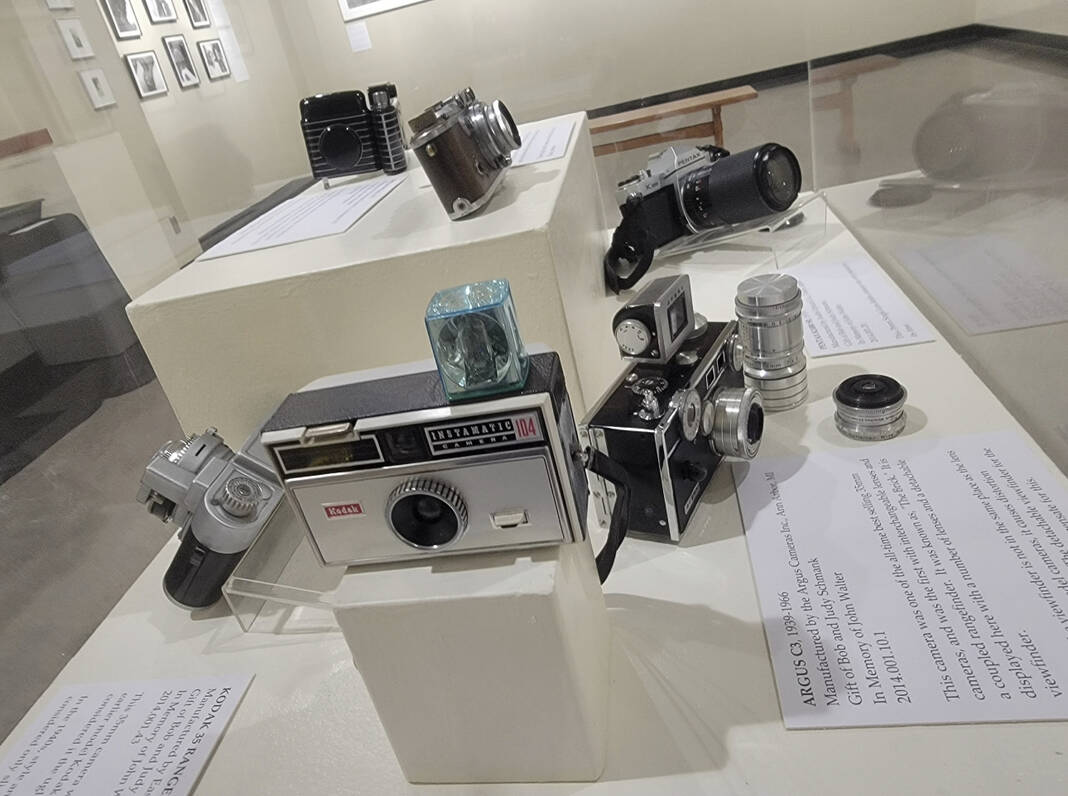
This exhibition explores both the technology and the history of film photography through the ages.
The Southern Ohio Museum and Cultural Center (SOMACC) is ready to open another interesting exhibition with “Emulsion: Film Cameras and Film Photography in Pre- and Post-Digital Age.”
“Throughout history, film photography has left an enormous impact on art and journalism. As the technology of photography developed, its impact became even greater, although we are living in a digital age, its relevance continues today,” an exhibition description by the museum read.
The showcase is curated by museum employee Jenna Stewart and is a throwback to her first ever curation at the museum, “Click,” which featured many of the same elements without many new additions found in “Emulsion.”
“The first went really well. The focus of it was a little bit different. That was just showcasing the cameras,” Stewart explained. “This current show does have technical details, but the first was more so. It didn’t include photography outside of a few to showcase examples from different photography types. The focus of it was just the collection, though.”
While Stewart has spent many years at the museum and has curated other works since, she is excited to be curating the current expansion on her first, especially with a background in photography that gives her a passion for the subject.
“It feels pretty good. We decided we hadn’t had the cameras out in a while and wanted to get them out, but I wanted the focus and point of this show to be different, because I wanted to stress that film photography is still a relevant medium and is still used,” Stewart said. “I think people get this idea that film photography is outdated, and people are only using digital. I wanted to be sure we included some of the history of film photography, but that we also included contemporary photographers who still work in film, because what they are doing is very special.”
This exhibition explores both the technology and the history of film photography through the ages.
The exhibition includes cameras from the late 1800’s to the 1990’s, from large view cameras with accordion folded bellows and mahogany wood trim, to Kodak Instamatics with flash cubes. These cameras are part of the Museum’s “Bob and Judy Schmank Camera Collection.”
In addition to the antique cameras, per the more technical side of the show, the museum has also laid out a sample dark room in the gallery, illustrating the film development process, with an enlarger and developing trays.
As Stewart explained, however, the exhibition is definitely more than just cameras and a delving into the process of film. It showcases examples of historical documentary photographs and those from WPA projects also on view, as well as contemporary approaches to the art form.
Exhibition artists include W.E. Arnold, Clarence Holbrook Carter, Kayla Holdgreve, Diana Duncan Holmes, Richard Malogorski, Mat Marrash, Robert C. May, Marissa Stewart, Wade Thompson.
“Photography played a large role in journalism, sharing images coast to coast. Selections from the Carl Ackerman Collection are included in the documentary photographs exhibited,” the release from the museum continued. “Clarence Holbrook Carter used source photographs for many of his large, iconic paintings. In the gallery are Carter’s snapshots of the circus, musicians, and Appalachian life.”
While digital has taken a prominence in photography, the museum states that contemporary photographers are again preferring to work with film photography today, getting results not attainable with digital processes.
Stewart gave some of these examples as Polaroids, and large format, montages, infrared film, anthotype and silver gelatin prints and an artist using a 360 degree Cirkut Camera.
Stewart also commented on the artform of film being much more complex than digital in some sense.
“You have to be a lot more aware of the photographs you’re taking and the staging, because you don’t have infinite numbers of photos you can take,” Stewart said. “That sounds like a downside, but I think it forces the photographer to be more present in creating the photo. It can be helpful in pushing artistic vision or the accuracy of their work.”
“Emulsion: Film Cameras and Film Photography in Pre- and Post-Digital Age” is currently on display at the Southern Ohio Museum and Cultural Center. The museum is at 825 Gallia Street in Portsmouth. There is also a handicapped accessible entry point on Sixth Street. They are open Tuesday through Friday, between 10 a.m. and 5 p.m. and Saturdays, 1 to 5 p.m. There is a voluntary donation of $2. A member of the museum may be reached at 740.354.5629.
“For older viewers, I hope this digs into their memories of using film cameras and brings them back to a time when photography was basically used for documentation, art, and advertising,” Stewart explained. “For younger viewers, I hope it sparks interest in film. If it can just make them a little interested in film photography versus digital, then I think the show will have been a success. I also want people to seek out photographers who are using film, because they’re doing something a little bit unique right now.”
Reach Joseph Pratt at (740) 353-3101, by email at [email protected], © 2022 Portsmouth Daily Times, all rights reserved

